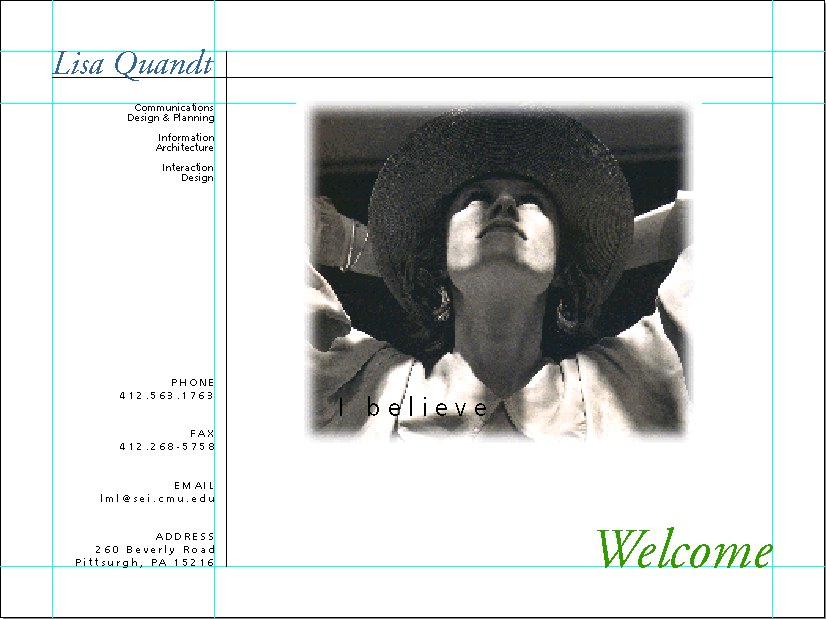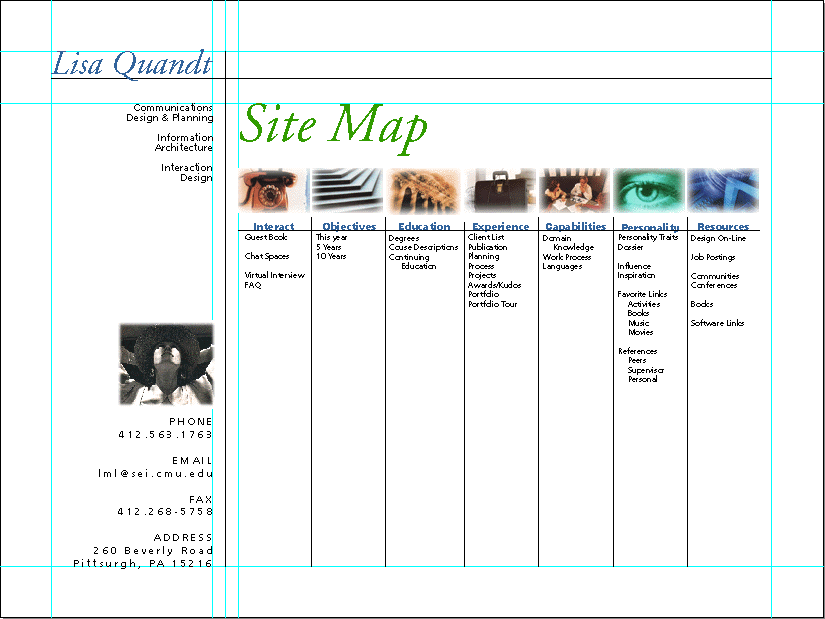
Our goal is to create a list of characteristics essential for an on-line portfolio to be anticipatory, immersive and rewarding. The on-line portfolio is a tool to supplement and facilitate an interview, not replace to replace face-to-face discussions. We will create a simple prototype to demonstrate one way of implementing these concepts and to show the scope of professions in which on-line portfolios will be helpful for both candidates and potential employers.
Background A cover letter, resume and portfolio or CV are the common tools for presenting yourself and your work to others whether you are a freelance or employed, a writer, designer, illustrator, or interaction designer, etc. The weight each of these tools carries seems to vary with occupation. In the business world it is very uncommon to show a portfolio.
The role of designers is becoming broader and more in-depth as strategic and interdisciplinary responsibilities increase. Therefore a traditional portfolio alone cannot provide adequate information about purpose and process nor can a resume visually demonstrate your ability to solve problems. This is why we want to push the limits of what a on-line portfolio could or should be.
Here is how we hope to bring users through the experience.
Connection can be made with a cover letter, post card or a business card. All of these should list your Web site address and should be tailored to your audience as much as possible. Best case of connection is when someone refers you to another (reputation). Important interpersonal connections will also be made during an interview.
Attraction The nature of a portfolio is to be attractive, I mean, if it isn't attractive -- you're in big trouble. Visual elements should be informative as well as entertaining. The structure and content of an on-line portfolio reinforce the information visitors want or need to know.
Orientation A splash page introduces the person and the site. It sets the stage for future interactions and facilitates further investigation of the on-line space. Orientation and navigation of the site should be intuitive and easy to get around. Site maps, descriptive titles, information hierarchies and solid architecture are ways to achieve this in a portfolio.
Compelling and Appropriate Experience An on-line portfolio will show diversity I the projects you've worked on, the experiences you've had and your interests. An honest reflection of your personality would be considered an appropriate experience - hopefully a compelling one as well. An on-line site that tells how you do things and why will help others learn more about you.
Retention We aim to hold your attention by providing a variety of access points, a web of paths and relevant outside resources. A site that conveys a breadth of information and manages the subsequent complexity, is a site that is well designed and anticipatory.
Extension and Leverage The on-line portfolio we are suggesting will provide self guided tours through your projects and experiences. This provides a common vocabulary and support for verbal information that is given over the phone or in a face-to-face interview. The employer doesn't need to request such things as samples or references, nor do you need to send them - the site will leverage your conversations. It is extensive in that it tell more about the person than a normal portfolio and more about the artifacts than the interview.
Social Reputation The on-line portfolio can build on existing social reputation when it has links off reputable educational and professional sites. It can also boost brand reputation by appropriate providing links to professional associations, interesting sites or titles. In other words you are (or the company is) guilty by association. Business colleagues, personal contacts, and clients can suggest someone visit your site. The on-line portfolio can also be considered an artifact that tells your story. Visitors can determine how much care you put into detail, ability to problem solve, etc..
Increasing Returns Since our model will contain references and resources outside the site and outside traditional concepts of portfolio we think it will save time and effort for both candidates and employers. Inspirational links can be accessed by any one and will enhance the interview experience. Since we have control over the contents of the site we don't need to wait for the perfect interview questions to be asked before we provide the samples. So one of the increasing returns for us is that we have less information to follow up. And increasing returns for companies is reduced cost of travel expenses, ability to share interview with others in company without having the candidate there first.

